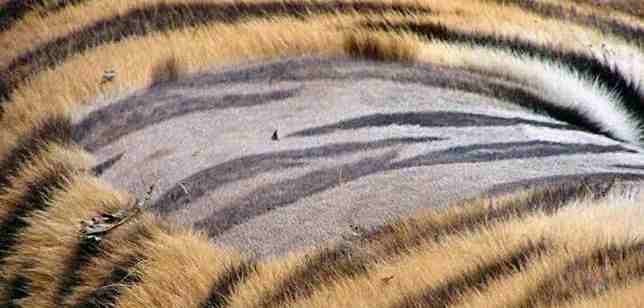 Alfred Ajibola
- Sun, 24th March, 2019 @ 2:42 PM
Alfred Ajibola
- Sun, 24th March, 2019 @ 2:42 PM
Topics in Basic Science
What is science? Qualities of a scientist Resources from living things Resources from animals Importance of immunization Types of Carbohydrates: Monosaccharides and Polysaccharides Carbohydrates: Disaccharides and Oligosaccharides Len Academy Examination Questions for Basic Science, JSS2, 2nd Term Len Academy Examination Questions for Basic Science, JSS3, 3rd Term Len Academy Examination Questions for Basic Science, JSS3, 2nd Term Primates: Characteristics of Primates Effects of improper waste management Waste Management: Causes of waste in the society Concept of mass and weight Mineral Salts: Sources, functions and deficiencies of macronutrients Sources, functions and deficiencies of micronutrients Len Academy questions for Basic Science JSS1 Len Academy mid-term test questions for Basic Science JSS1, 2nd Term Microorganisms causing food, water and air borne diseases Vector borne organisms and the diseases they cause Bones of the Human SkeletonAcademic Questions in Basic Science
Which of the following diseases is associated with river blindness?
A. Anthrax
B. Lawnmower Disease
C. Onchocerciasis
D. Devil's Crunch
E. Trypanosomiasis
F. Tularemia
The vector for yellow fever is _____.
A. Aedes Mosquito
B. Female Anopheles Mosquito
C. Plasmodium
D. Flavivirus
E. Black Fly
F. Bacillus Anthracis
The bones of the head and face make up the skull. These bones are _____ in number.
A. 12
B. 14
C. 16
D. 18
E. 20
F. 22
Bacteria are not a constituent of our environment.
A. True
B. False
Below are types of drugs. Which of these is considered as pain killers?
A. Stimulants
B. Depressants
C. Opiods and Morphine Derivatives
D. Hallucinogens
E. Anabolic Steroids
F. Cannabinoids
Which of the following statement is false concerning drugs?
A. Drugs can be inhaled
B. Drugs can be injected directly into the bloodstream
C. Drugs can be eaten
D. Drugs exist exclusively in the forms of tablets and syrups
E. Drugs can be placed under the tongue
F. Drugs can be taken with water or another liquid
Vaccination involves a process of introducing pathogens or germs into a person in order to prevent such person from the diseases they cause.
A. True
B. False
With regards to the human health, foreign bodies are best regarded as _____.
A. International bodies
B. Antilators
C. Antibodies
D. Antigens
E. Antibiotics
F. Antidotes
If you take a look at the upper part of your left arm, you may likely see a tiny depressed spot. This is a sign that you are immunized.
Before I define immunization, I think it's a good idea if we understood it's concept. Below is a brief analogy:
When a baby is born, he or she must live in an environment. For now, think of your environment as everything that surrounds you. It includes the air, your clothes, the food you eat and so on.
Please read on the basic characteristics of life here.
Always understand that the air, water and land that make up our environment contain billions of pathogens or germs. Pathogens are organisms that cause diseases, that is: 'disease causing organisms'. Based on this fact, it becomes obvious that a variety of micro-organisms constitute a part of our environment. In this regard, pathogens or germs may find their way into the baby's system (whom is yet to be immunized).
Please read on vectors and disease causing organisms here.
The 'unimmunized' baby's immune system has no knowledge of the pathogens that gained entry into the baby; hence these pathogens are termed foreign bodies or non-self with regards to the baby's system.
The baby's immune system will react very slowly while attempting to fight back. The slow response from the immune system arises because the baby's defence system (called antibodies) have got no memory or idea of these foreign bodies.
Please read on micro-organisms that causes food, water and air borne diseases here.
It is worthy of note to state that foreign bodies are also referred to as antigens<.
The terms 'foreign body, pathogens, germs and antigens' will be used interchangeable in this article since they all refer to something similar; that is, 'causative agent for diseases'.
The above scenerio can be detrimental to the baby's health; but the good news is: 'Immunization gives a prior knowledge to the immune system on the specific antigens that may gain entry into the baby's system'.
In short, the baby's immune system is now prepared for whatever foreign body (antigen) that may find it's way into him or her; as far as he/she is immunized from the diseases caused by the antigen.
Please read on homeostasis and negative feedback mechanism here.
In reality, after a baby is born, he or she must be immunized against the respective antigens and their consequent diseases.
Immunization is defined as a process of introducing weakened or dead forms of disease causing organisms (pathogens or germs) into a person in order to prevent such person from the diseases they cause.
These weakened or dead forms of disease causing organisms administered to the baby is termed vaccine. For this reason, immunization is also referred to as vaccination
Most vaccines are given by injection (via a needle), while others may be given orally (via the mouth) or nasally (via the nose). Vaccinations via injection and oral (mouth) are shown in the image below:

Note: Immunization is also called vaccination, shots, jabs or needles
Please read on the importance of immunization here.
With regards to the fact that vaccines contain the exact same pathogens or germs that cause diseases (but in a weakened or dead form), the vaccine becomes harmless and do not make the child sick.
The importance of the infused vaccine is based on the fact that it triggers the production of antibodies.
Antibodies are responsible for fighting and killing the already weakened or dead pathogens contained in the vaccine during immunization or vaccination.
The generation of the specific antibodies against the pathogen or antigen (present in vaccine) will serve as an indication to preparedness; in case the same exact pathogen, antigen or germs find their way into the baby again.
However, understand that these antibodies retains a memory of how they rapidly killed their respective pathogens when they first entered the baby's system in their weakened/dead forms (during vaccination/immunization).
You can read key points on various subjects here here.
Now, let's imagine that after vaccination, the real pathogen (capable of causing disease) enters the child's body. At this point, the child will be on the safer side because:
Kindly share this article via the links below:

Please click here to contact Alfred if you require any of the following services:
If you need a standard website at an affordable price.
Online training on the academic subjects: biology, chemistry and basic science.
If you require an advanced smart school management system (web application) for your school.
Click here to read on Len Academy Smart School Software.
Please click here to follow Len Academy on Google News.
Amazing facts in Basic Science
According to scientific research, if the first tear drop comes from the right eye, it’s tears of joy. If it comes from the left eye, then it is as a result of pain
Dentistry is the oldest profession in the world. This is considered true because a research conducted by the University of Bologna, Italy on a 14,000-year-old skull found that one rotten tooth in the jaw had been deliberately scoured and scraped with a dental tool
Scientific research has it that the human nose can distinguish more than a trillion different odors

Tigers have striped fur. So also is their skin

The most common wild bird in the world is native to Africa, and it's the red-billed quelea with a population estimated to be around 1.5 billion
Of all animals, mosquitoes hold the record of killing most humans annually. They are responsible for the deaths of 725,000 - 1,000,000 persons yearly
Antibiotics fights and kills bacteria. However, they do nothing to a virus
All insects have six legs. However, dragonfly has six legs but can't walk
The chin is defined as the protruding part of the face below the mouth, formed by the apex of the lower lip. It is shown below:

Interestingly, humans are the only animals with chin

Ripe cranberries will bounce like a ball. For this reason, they are nicknamed 'bounceberries'. They will also float in water
Notable points in Basic Science
We have six classes of food. These are:
Carbohydrates
Proteins
Fats and Oils
Vitamins
Mineral Salts
Water
In humans, roughages are not classified as one of the classes of food. This is so because they aren't digested. Instead, roughages facilitate the movement of bowels in the large intestine (colon); and for this reason, they can become useful in treating constipation.
Food refers to anything that is ingested by living organisms, giving them nutrients and thus enabling them to stay alive.
As an instance, 99% of a panda's diet is bamboo. In this case, bamboo is considered as food to a panda since it provides a source of nutrient and keeps it alive. This is shown in the image below:

The only process in nature that actively enriches our atmosphere with oxygen is photosynthesis. Every other process like respiration, burning and combustion takes away oxygen from it. In addition, they introduce carbon(IV)oxide (CO2) into the atmosphere.
Photosynthesis is also the only process that takes away carbon(IV)oxide (CO2) from the atmosphere.
Photosynthesis is defined as a process by which green plants manufacture food by utilizing carbon(IV)oxide and water in the presence of sunlight.
Oxygen is given off as a by-product of photosynthesis. In regards to this, it is recommended that each person plants a tree.
Matter is composed of particles which can be:
Tightly packed together (as seen in solids).
Loosely packed together (as seen in liquids).
Completely separated (as seen in gases).
The movement of the particles of matter is a function of the overall kinetic energy present in them. You can think of kinetic energy as energy in motion.
An increase in the particles' vibrational, rotational or translational motion will imply an increase in temperature while a decrease in the particles motion (vibrational, rotational and translational) will mean a decrease in temperature. Based on this knowledge, we can therefore define temperature as the measure of the average kinetic energy possessed by the particles of matter.
Intelligence Quotient (IQ) is a score derived from a set of standardized tests developed to measure a person's cognitive abilities in relation to their age group.
IQ may also be defined as the ratio of mental age (MA) to chronological age (CA) multiplied by 100.
Below are some formulas pertaining Intelligence Quotient:
IQ = MA x 100 ÷ CA
MA = Mental age
CA = Chronological age
IQ above 100 = Brilliance
IQ that equals 100 = Average
IQ below 100 = Below Average